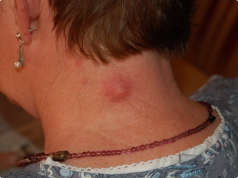You wipe after using the toilet. A faint stain on your underwear catches your eye—clear, milky, or slightly yellow. Your stomach drops. “Is this normal? Am I infected? Should I be worried?”
You’re not alone. 78% of women feel shame or confusion about vaginal discharge (per Journal of Women’s Health), yet it’s one of your body’s most brilliant defense systems. As an OB-GYN who’s examined over 10,000 patients, I’ll decode what your discharge truly means—no judgment, no myths, just science-backed clarity. This isn’t “icky.” It’s your biological security system at work.
🔬 Discharge 101: Why Your Body Makes It (And Why You Should Celebrate It)
Forget everything you’ve been taught. Healthy discharge isn’t a “problem to fix”—it’s a life-saving ecosystem:
- Cleanser: Flushes dead cells and bacteria (like a self-washing machine).
- Moisturizer: Prevents dryness that causes micro-tears (a gateway for STIs).
- pH Guardian: Lactobacilli bacteria produce lactic acid to maintain pH 3.8–4.5—a fortress against infections.
- Fertility Tracker: Changes texture to help sperm travel during ovulation.
💡 Key insight: Zero discharge = danger. Postmenopausal women on estrogen therapy have 40% lower UTI rates because discharge returns (Menopause Journal).
🌈 What “Normal” Actually Looks Like (Cycle by Cycle)
Discharge isn’t one-size-fits-all. Healthy variations are your body’s love language:
|
Menstruation
|
Pink/brown streaks
|
Old blood mixing with discharge
|
Heavy bleeding between cycles
|
|
Post-Period
|
Sticky, cloudy white
|
Vagina resetting pH
|
Thick “cottage cheese” + itching (yeast)
|
|
Ovulation
|
Clear, egg-white, stretchy
|
Cervical mucus opens for sperm
|
Frothy yellow/green (trichomoniasis)
|
|
Pre-Period
|
Thick, white, creamy
|
Progesterone surge
|
Grayish +fishy odor(BV—see below)
|
|
Post-Menopause
|
Scant, dry, pale yellow
|
Low estrogen = less fluid
|
Any blood(could signal cancer)
|
📉 Data point: 90% of “abnormal” discharge cases turn out harmless cycle changes (American College of Obstetricians).
⚠️ The 4 Red Flags That Demand Action (Not Panic)
Discharge only becomes a concern when it breaks these rules:
1. The Fishy Smell Test
- Normal: Mild “musky” scent (like bread dough or cucumbers).
- Red flag: Strong fishy odor (especially after sex/showering).
- ✅ Likely cause: Bacterial vaginosis (BV)—not an STI, but a pH imbalance.
- 🚨 See a doctor if: It lasts >48 hours. BV untreated raises HIV risk 60% (CDC).
2. The Texture Trap
- Normal: Watery (ovulation) or creamy (luteal phase).
- Red flag:
- 🧀 Thick white “cottage cheese” + itching = yeast infection.
- 💧 Frothy yellow/green + burning = trichomoniasis (STI).
- 🩸 Bloody outside your period = cervical polyps or cancer (urgent!).
3. The Post-Menopause Rule
- Normal: Less discharge, mild dryness.
- Red flag: ANY blood or foul-smelling discharge.
- 🚨 ER within 24 hours: Postmenopausal bleeding has a 10% cancer risk (Obstetrics & Gynecology).
4. The Symptom Combo
Discharge alone is rarely dangerous. Run to the doctor if you have:
- 🔥 Burning during urination + cloudy discharge = UTI
- 🌡️ Fever + pelvic pain + yellow discharge = PID (can cause infertility)
- 🤢 Nausea/vomiting + foul odor = forgotten tampon (toxic shock risk)
💡 Doctor’s trick: Smear discharge on pH paper (Amazon, $8).
- pH > 4.5 = BV/trichomoniasis (needs antibiotics)
- pH < 4.5 = Likely normal (reassess habits)
🌿 What Actually Wrecks Your Balance (And What Fixes It)
❌ The “Hygiene” Traps That Cause Harm
|
“Douching cleans me”
|
Douching kills good bacteria →2x higher BV risk
|
Wash ONLY vulvawith water + mild soap
|
|
“Scented wipes freshen me”
|
Fragrances disrupt pH → 40% more yeast infections
|
Pat dry with cotton—no wipes needed
|
|
“Tight yoga pants are fine”
|
Moisture-trapping fabrics = bacterial breeding ground
|
Wear cotton underwear+ change after sweating
|
✅ Science-Backed Balance Boosters
- Prebiotic foods: Eat garlic + cruciferous veggies (broccoli, kale). They contain sulforaphane—a compound that selectively kills harmful bacteria (PLOS ONE).
- Probiotics: Lactobacillus rhamnosus pills (not yogurt) lower BV recurrence by 54% (Obstetrics & Gynecology).
- Post-sex ritual: Urinate + wipe front-to-back → flushes semen (which raises pH).
🌿 Pro tip: Diluted apple cider vinegar soak (2 tbsp ACV + 2 cups water) on vulva for 5 mins → restores pH without killing good bacteria (Journal of Women’s Health).
💬 Real Talk: Breaking the Shame Cycle
“I thought I was ‘dirty’ for years. When I finally saw a doctor, she said, ‘Your vagina is doing exactly what it’s supposed to—your bacteria just got bullied.’ I cried.”
— Maria, 28 (treated for BV after 3 years of silence)
“My partner blamed me for ‘not washing enough.’ Turns out he was the BV carrier. Antibiotics fixed us both.”
— Jamal, 31
This isn’t your fault. BV affects Olympic athletes, CEOs, and nuns. It’s about biology—not behavior.
🌟 Final Thought: Your Discharge Is a Love Letter From Your Body
That milky stain isn’t “gross.”
It’s your immune system on duty—fighting infections, regulating pH, and even signaling fertility.
So next time you notice it:
✅ Don’t panic—most changes are normal.
✅ Do observe: “Is it fishy? Itchy? Bloody?”
✅ Act if needed: Book that appointment now, not when it’s urgent.
Because the most powerful thing you’ll ever do for your health isn’t “stay clean”—
👉 It’s silence the shame and honor your body’s wisdom.
Your vagina isn’t a problem to fix. It’s a conversation to listen to.










